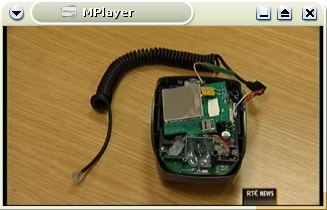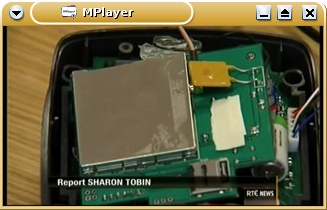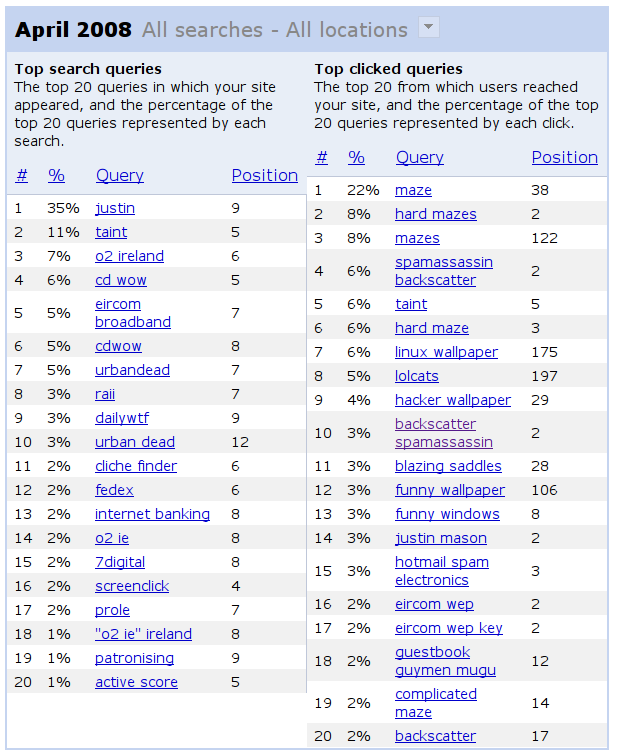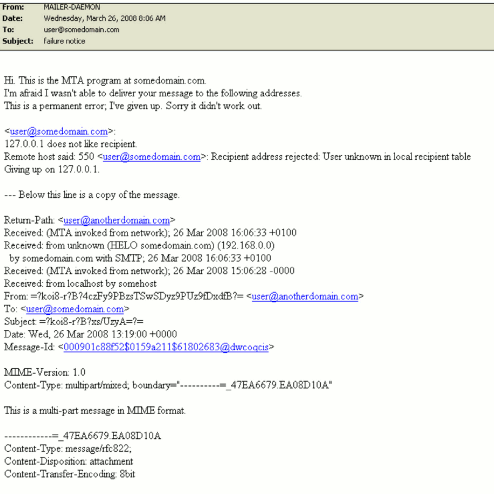Bank of Ireland, one of Ireland’s biggest high-street banks, was the subject of a breach notification yesterday — 4 laptops, containing unencrypted “sensitive personal information” about up to 10,000 customers, were stolen between June and October 2007. It seems the Irish Data Protection Commissioner was not informed until last Friday. The Financial Regulator is also looking into the incidents.
According to the Independent, the laptops ‘were being used by staff working for Bank of Ireland’s life assurance division. They contained the information about medical history, life assurance details, bank account details, names and addresses.’
This breach has raised quite a few issues.
First off, I was watching Questions and Answers last night, and was shocked by the naivete of the assembled panel. One panelist, for example, reckoned that common criminals wouldn’t understand the value of this data — so it was probably nothing to worry about!
There was absolutely no concept of how widespread identity theft has become — using stolen identity information to apply for credit cards is part of Petty Theft 101 these days, since filling out forms is a lot easier than breaking and entering, obviously. There was also no appreciation of how little protection Irish consumers have in this regard with current Irish banking T&Cs.
According to previous research, about 2% of accounts compromised in data breaches become victim to identity theft.
Some comments from the bank from those articles:
‘The data was not encrypted, although it is understood there was software security installed on the stolen computers.’
Doubtless, “software security” refers to some kind of useless Maginot Line boondoggle like Norton Internet Security. This would have absolutely no useful effect in this case. The only useful way to protect customer data on a stolen laptop is to use encrypted storage.
‘In the interim the bank has monitored all of these customer accounts and can confirm that there has been no evidence of fraudulent or suspicious activity.’
This is a fallacy. This data provides plenty of information regarding the customer’s identity — information which is useful to receive loans and credit fraudulently, elsewhere. Monitoring the bank’s accounts is of no help in that case. On top of that, identity information like your date of birth, mother’s maiden name, health status, and so on doesn’t expire — that info will still be useful for identity theft, 10 years from now, or as a stepping-stone to further fraud.
As John O’Shea noted on Twitter earlier,
there was nothing on their website about it this morning; there is now, however — a broken link
on the front page. oops!
Figuring out the puzzle and fixing the URL’s errors gets you to this page, which notes:
The laptops contained information relating to some customers who either obtained a quote or took out a Life Assurance policy with Bank of Ireland Life from the following branches:
- Drogheda
- Dunleer
- Bagnelstown
- Court Place Carlow
- Stephens Green
- Tallaght
- Montrose
Anybody who is not a customer of these branches is not affected by this incident.
As far as I can make out, the bank didn’t issue this breach notification. It appears from the coverage that this information was first announced by Data Protection Commissioner Billy Hawkes to RTE yesterday, leaving the bank apparently scrambling to catch up:
“The thefts of the laptops were only brought to the attention of the appropriate authorities in the bank in the past number of weeks,” Bank of Ireland said in a statement that offered no other explanation for the long delay.
It would have been so much better if BoI had been proactive with breach notification — examples from overseas have illustrated its value. As Adam Shostack has noted repeatedly over the past few years: the rules have changed.
As for repercussions for BoI, it’ll be interesting to see if anything happens. For “live” customer data on up to 10,000 customers to be stored, in unencrypted form, on a laptop is terrible security practice — but as far as I know, there are no laws or regulations requiring anything better in Ireland, unfortunately. :( However:
Consideration will be given as to what further action will be sought
from Bank of Ireland to ensure that the obligations contained in the Data
Protection Acts in this area are met.
On a broader level, this issue serves to highlight once again the absolute
necessity for all organisations in the public and private sector to take
their data protection responsibilities seriously. In particular, all
organisations should be assessing immediately the necessity for storing
personal data on laptops. If a need is found, appropriate security measures
such as encryption should be put in place immediately.
Go Billy! ;)

















